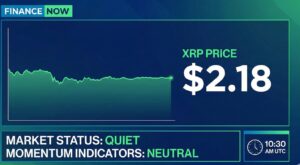Blockchain technology has been causing a stir across multiple sectors, and the world of cultural heritage preservation is no different. Below, we will look at the role blockchain technology plays in cultural heritage and its preservation.
Blockchain and Cultural Heritage
The tokenization of art and culture and the rising popularity of cryptocurrencies have led to a change in the efforts made to preserve cultural heritage. Tracing the history of antiquities or just appreciating distinctive international sites are examples of how the desire to support cultural preservation extends to digital assets.
What Benefits Does Blockchain Bring to Cultural Heritage?
Data Security and Integrity
Creating a transparent and safe digital archive of cultural assets is one of blockchain’s main benefits for cultural heritage. Distributed ledger technology helps stakeholders reduce the risk of fraud and manipulation by ensuring the authenticity and consistency of historical data.
Transparency and Accountability
Blockchain technology encourages accountability and transparency, which are essential in the field of preserving cultural assets. Stakeholders may ensure responsible management by tracking the ownership and historical ownership trail of cultural assets via the creation of a public ledger of transactions.
Global Collaboration
Blockchain makes it easier for stakeholders from different countries to work together on projects and pool resources. This leads to international collaboration in the protection of cultural assets. This encourages the conservation of our common human history more effectively and efficiently.
Immutable Records
Immutability is one feature of blockchain technology. This feature means that once data is entered, it cannot be removed or altered. This feature makes the technology the perfect tool for preserving delicate historical documents that are important for future generations.
Applications of Blockchain in Cultural Heritage Preservation
Digital Archives and Repositories
Blockchain technology ensures the protection and accessibility of cultural assets by facilitating the establishment of digital archives and repositories. Through the use of blockchain technology, interested parties create a transparent and safe digital archive of cultural resources. This way, anyone can easily access these resources.
Authentication and Validation
Employing blockchain, cultural assets like artworks, manuscripts, or historical documents can undergo authentication and validation. This technology ensures the genuineness and integrity of these assets, preempting any potential fraud or manipulation.
Cryptocurrency Donations
Blockchain serves as a facilitator for donations to cultural institutions through cryptocurrency. Through blockchain technology, donors make secure and transparent contributions, guaranteeing the tracking and accountability of their donations.
Cultural Property Tracking: Blockchain offers a means to track the movement and ownership lineage of cultural property, including antiques or artifacts. Employing blockchain technology, stakeholders ensure responsible management of these items, preventing the illegal sale or trade of stolen property.
Final Words
Blockchain is slowly showing us that it can do more than we think it can. The technology appears to offer significant potential in democratizing cultural information control. This makes it easy for concerned parties in cultural heritage to share information and keep accurate records sans a central authority. The prospect of leveraging blockchain-based solutions raises substantial appeal, potentially safeguarding numerous resources from looting and reducing trafficking.




























